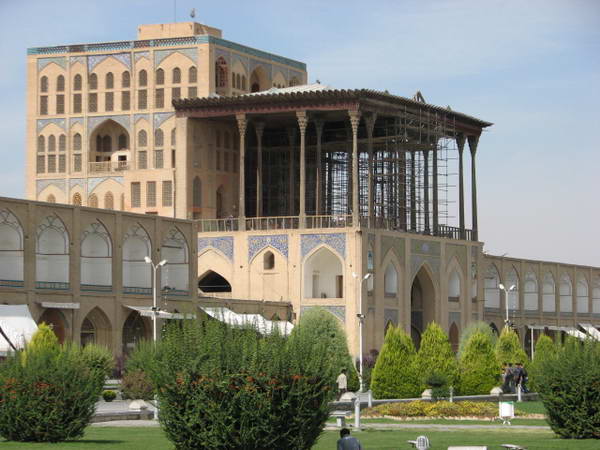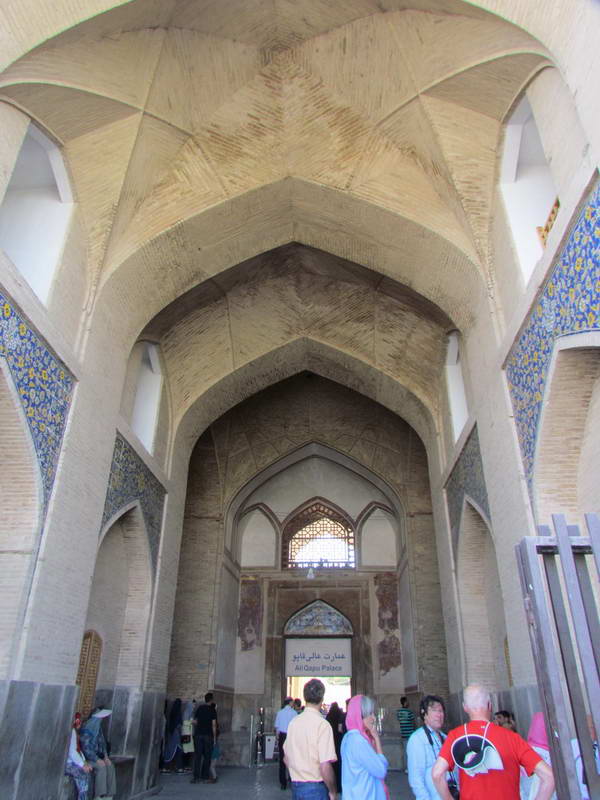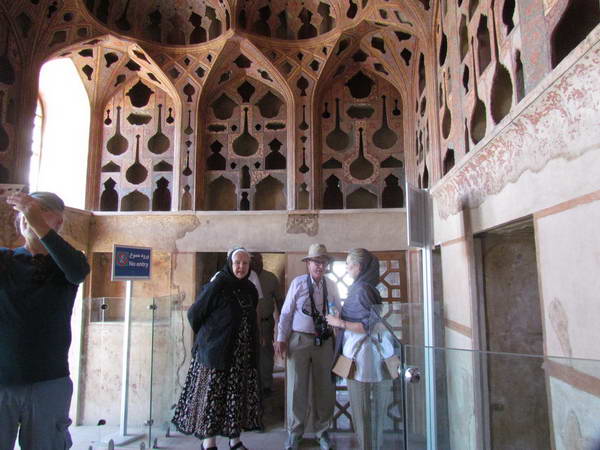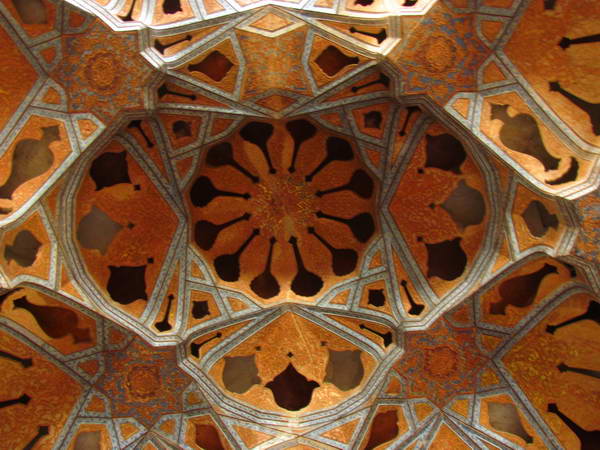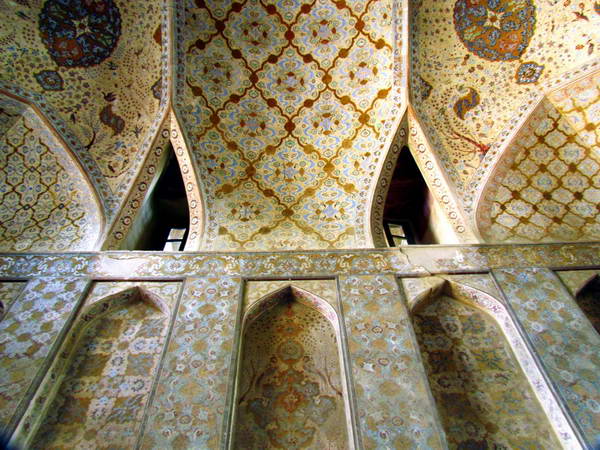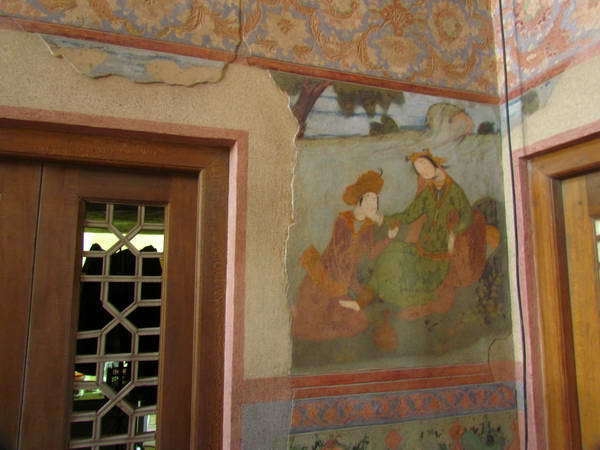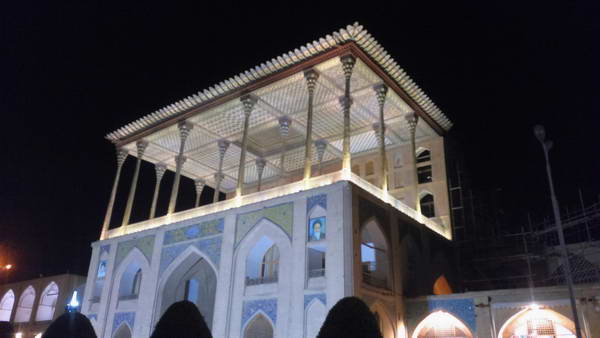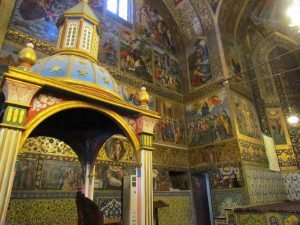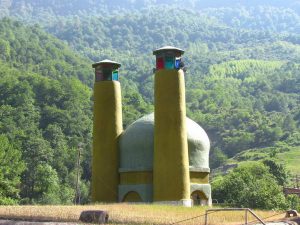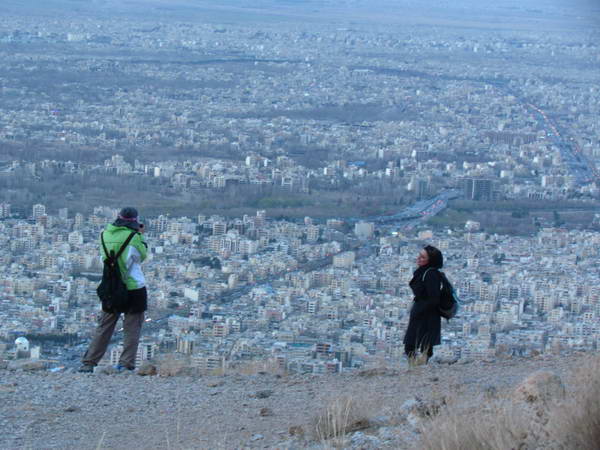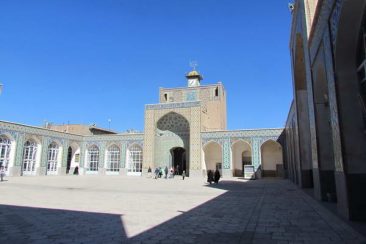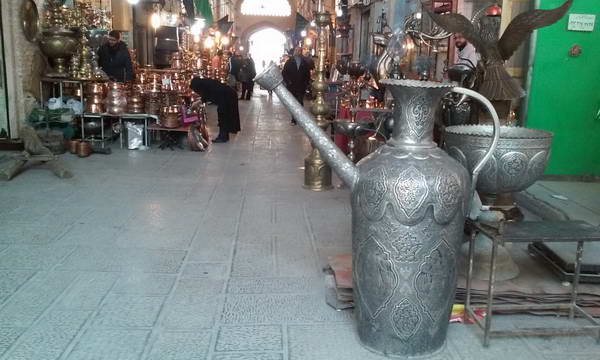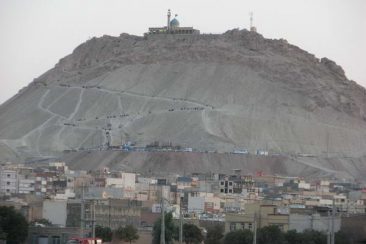Aali Qapu Palace is located in Isfahan on the west side of Naghsh Jahan Square and in front of Sheikh Lotfollah Mosque.
The construction of Aali Qapu Palace began after the transfer of the capital from Qazvin to Isfahan by Shah Abbas I, in 973 AH, as the seat and government of the Safavid sultans. It was then completed by other Safavid kings over 70 years.
Aali Qapu Palace is 48 meters high and has 6 floors that can be reached by spiral staircases.
What has made Aali Qapu one of the most magnificent and exquisite works of the Safavid era are the plasterworks in a hall on the top floor of the mansion. This hall called the “Music Room” or the “Sound Room”.
Also, the murals and miniatures of the famous Safavid artist Reza Abbasi have decorated the walls of Aali Qapu Palace. Some of Aali Qapu Palace murals are the work of European artists (Angel and Lucar) who were present during the reign of Shah Suleiman the Safavid in Iran.
Shah Abbas watched from Aali Qapu porch, polo and plays that were running in Naghsh Jahan Square, . He also dealt with the affairs of the country in Aali Qapo and issued the necessary laws. Another use of this palace is to receive special guests of the Shah.
Aali Qapu Palace has a different view on each side, so that it has a 2-storey view from the front of Naghsh Jahan Square, a 5-storey view from behind the building, and 3 floors from the sides of the building. In fact, Aali Qapu Palace, including the ground floor as the first floor, has a total of 6 floors.
The large porch of Aali Qapu Palace, which is supported by 18 tall columns, is located on the third floor of this palace and overlooks Naghsh Jahan Square.
Aali Qapu Palace has three staircases, including two symmetrical spiral staircases in the western part of the building and a staircase known as the royal stairs.
The music hall on the sixth floor of Aali Qapu Palace is the distinguishing feature of Aali Qapu Palace from other historical monuments. In the music hall, you will see the shapes of all kinds of wineglass and musical instruments in the form of plasterworks and cavities inside the wall and ceiling of the rooms in this hall. These cavities give the hall an acoustic state and prevent the reflection of sound when playing music.
Google map link of Aali Qapu Palace
